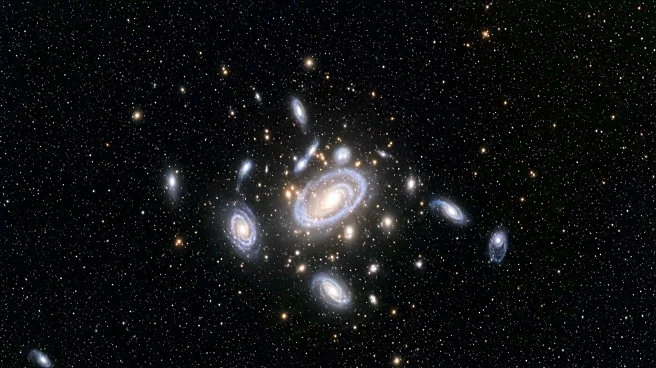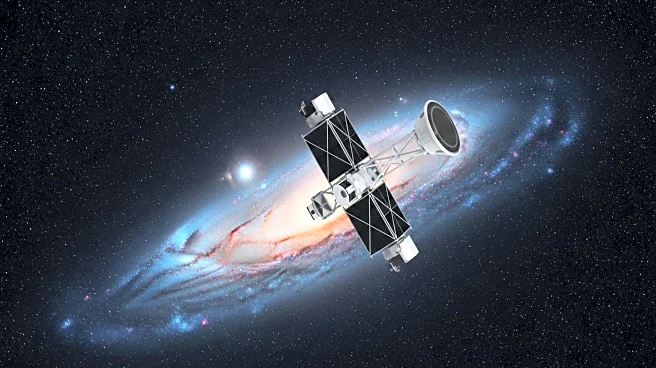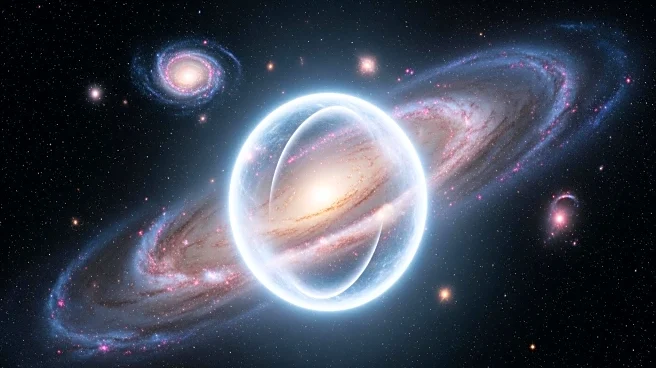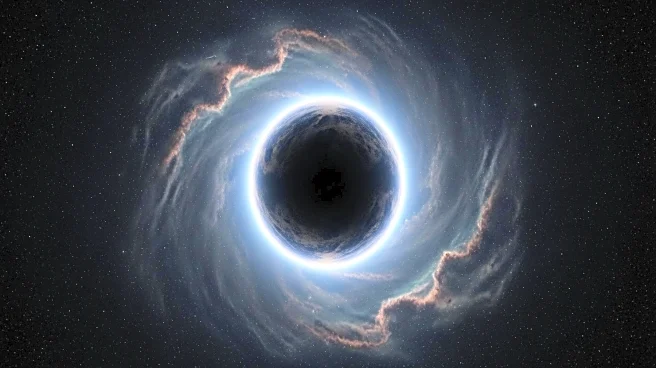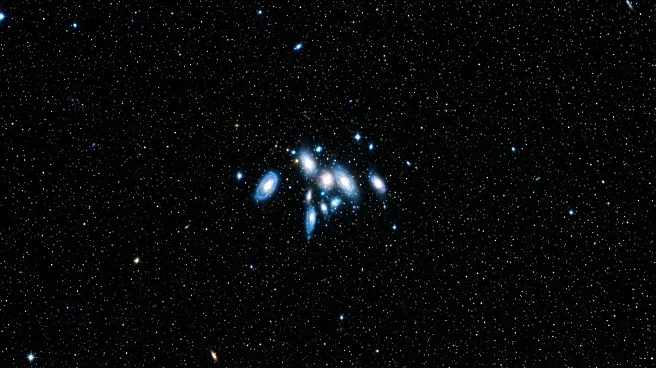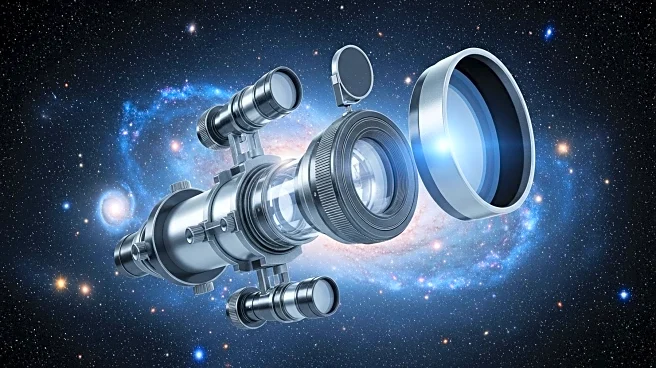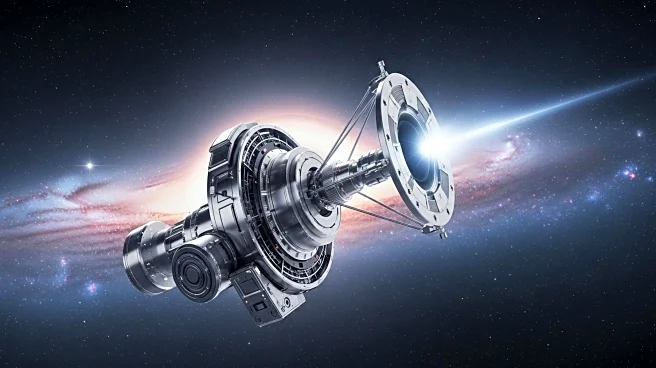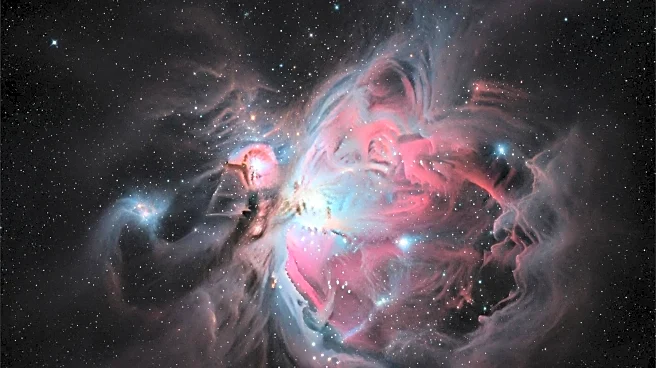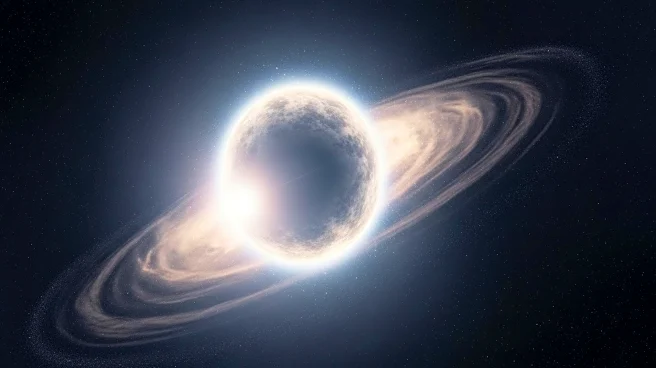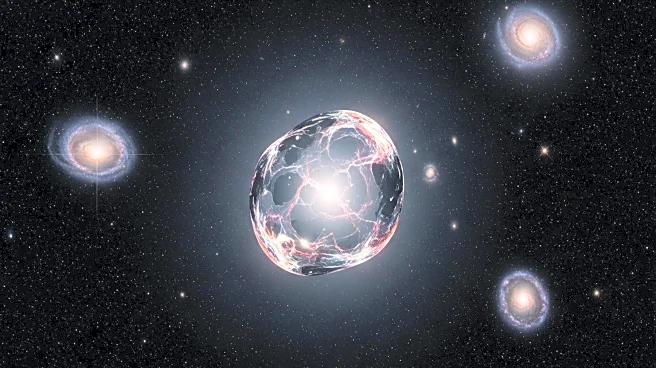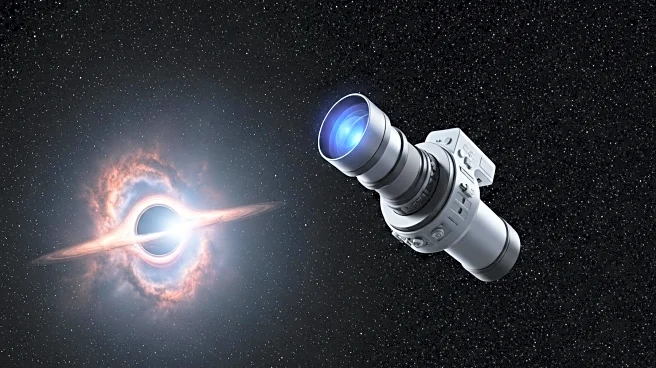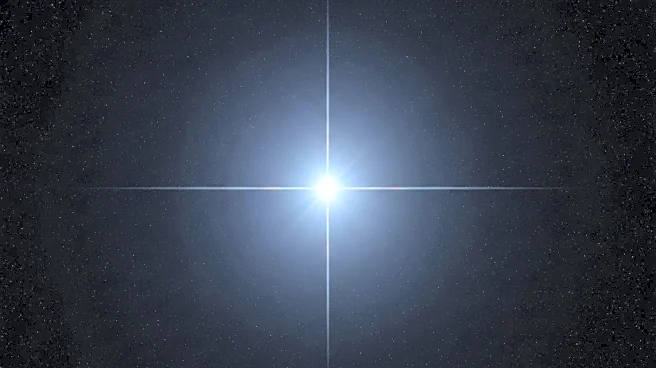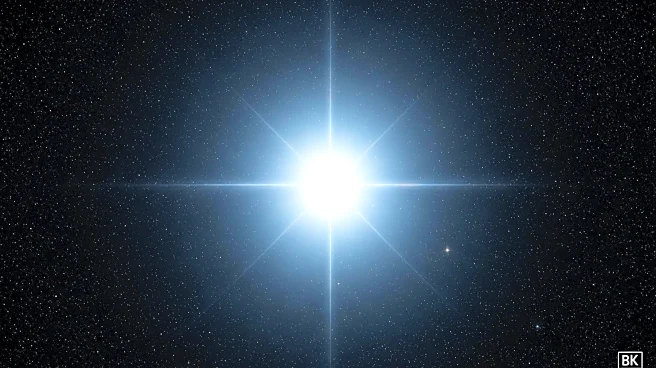What is the story about?
What's Happening?
Recent research utilizing data from the Hubble and James Webb Space Telescopes has revealed that small dwarf galaxies played a crucial role in lighting up the early Universe. These galaxies emitted ionizing photons that transformed neutral hydrogen into ionized plasma during the cosmic reionization period. The study, led by astrophysicist Hakim Atek, focused on the galaxy cluster Abell 2744, using its gravitational lensing effect to observe distant dwarf galaxies. The findings suggest that these galaxies were more abundant and brighter than previously thought, significantly contributing to the reionization process that made the Universe transparent to light.
Why It's Important?
This discovery is pivotal in understanding the early Universe's evolution and the role of dwarf galaxies in cosmic reionization. By identifying these galaxies as key players, the study challenges previous assumptions that larger galaxies or black holes were primarily responsible for this process. The research highlights the importance of studying low-mass galaxies to comprehend the Universe's history. These findings could reshape theories about galaxy formation and the distribution of matter in the early Universe, providing a clearer picture of how the cosmos evolved to its current state.
What's Next?
Researchers plan to expand their study to other regions of the sky to confirm that the observed dwarf galaxies are representative of the entire early Universe population. This will involve analyzing more cosmic lens regions to gather a broader sample of early galactic populations. The continued use of the James Webb Space Telescope will be crucial in these efforts, potentially leading to further breakthroughs in understanding the cosmic dawn and the factors that influenced the Universe's development.
AI Generated Content
Do you find this article useful?
